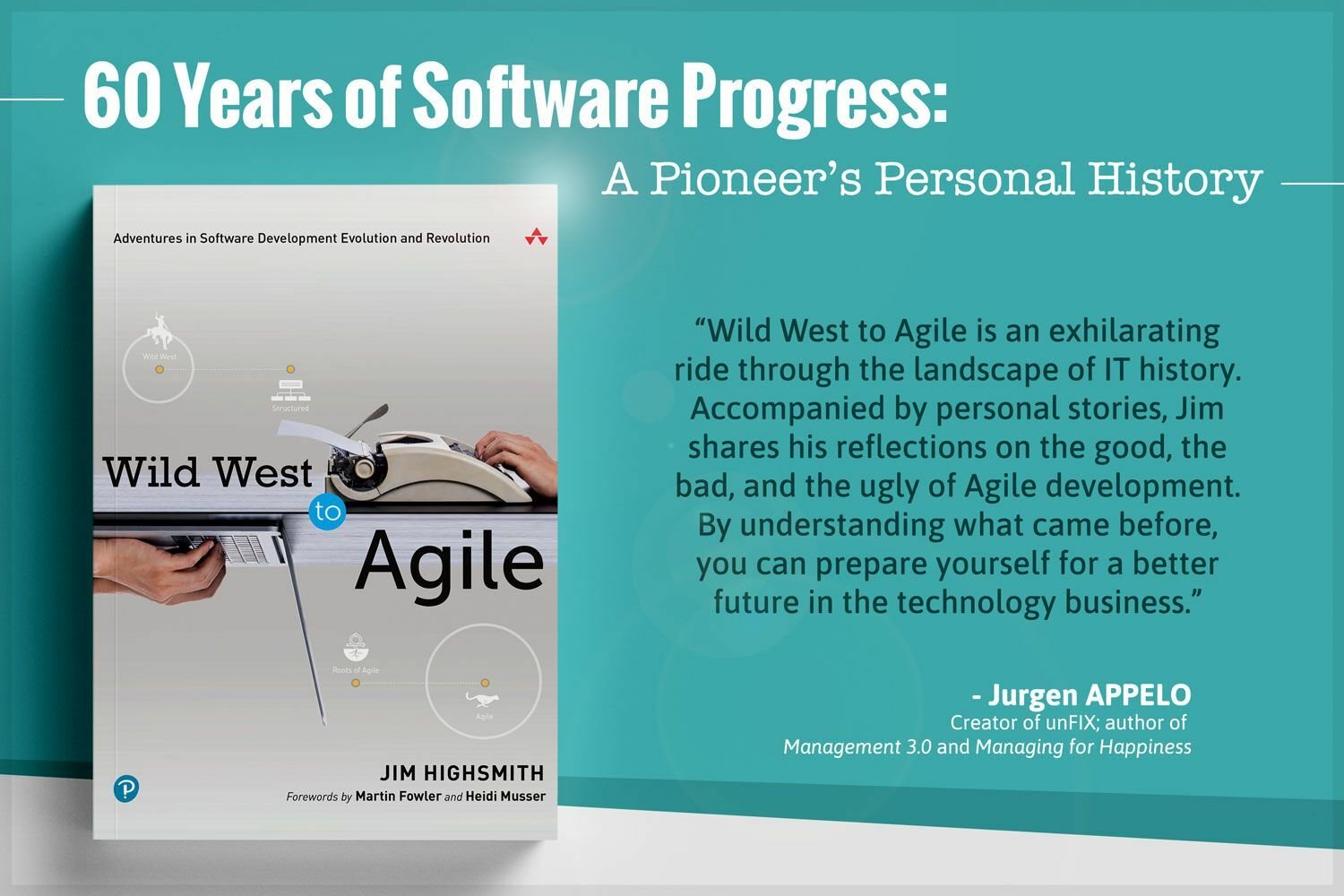Agile: A Continuation, Not a Conclusion
With the rapid pace of transformation in technology and work culture, it's challenging to predict what the future holds. It's clear, though, that new ways of working are emerging and they're here to stay. This workshop, based on Jim Highsmith's book "Wild West to Agile", attempts to do exactly that.
An Enlightening Conversation with Jim Highsmith
At Agile 2023, I had the pleasure of meeting Jim Highsmith, one of the original signatories of the Agile Manifesto. Our conversation was both insightful and thought-provoking, leaving me eager to explore more. As a board member of the Agile Alliance, I was excited to read his book and dive deeper into the history of Agile and software development. So, I began reading. It turned out to be a very rewarding experience.
The Ongoing Journey of History
Jim's book got me thinking about the continuity of history. We often view history as a series of past events, forgetting that we are currently living through it. Even Francis Fukuyama, the man who famously declared the end of history in 1992, has reconsidered his stance. We are all part of this unfolding narrative.
Inspired to Create a Workshop
Feeling inspired, I decided to develop a mini-workshop based on Jim's book. The aim was to guide people through the history of software development and Agile, contextualised by broader trends like technical innovation and global events. And to learn about their vision for how the future would unfold.
I had the opportunity to run this workshop with my colleagues at Nomad8 during our away weekend. It was so much fun that I thought others would love to try it too.
How to run the Agile History Workshop
Outline
1. Introduction
Start by using Jim's structure and historical eras as a guiding framework.
2. The Five Braids
Engage the group in a discussion about five key themes—World context, Software development, Technical Innovation, Management trends, and Adventurous Pioneers. Ask people what they know or remember about each of these themes across different timeframes (eg. 2000-2010)
Here is an example from Jim's book for the Agile Roots era (1990-2000):
3. Writing the Future
This is the interactive part. Ask participants to literally write history by choosing a timeframe—5, 10, 20 years from now—and use the braided approach to describe their vision for what might come next.
4. Share back
Ask each participant to share their vision of the future of software development taking into consideration trends in technology, management and "the world".
Sharing the Material
I have created some slides that outline the basic structure of this workshop. Feel free to use them as a starting point for your own sessions.
Download N8 History of Agile Workshop
Acknowledgments
Thank you to Jim Highsmith for our enlightening conversation and for allowing me to use his material for the workshop.
You should also get Jim’s book; it’s a great read!
Your turn!
Let me know in the comments how you think the future will shape up!






